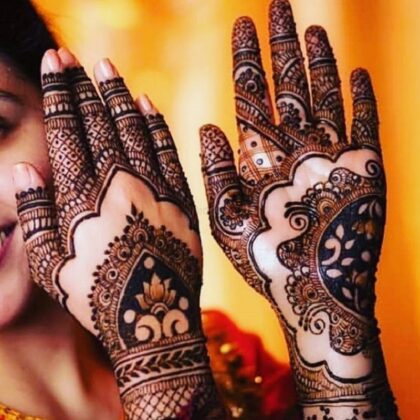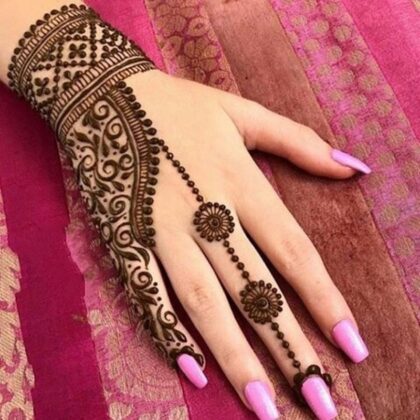
For a long time now, the better part of society has largely been governed by men. But, inconspicuous communities have long existed where women rule and are at the center of the culture.
The Merriam-Webster dictionary defines matriarchy as a family, group, or state governed by a woman; or a system of social organization in which descent and inheritance are traced through the female line. The idea of a society where women rule the political, social and economic structures may seem far-fetched to many, but history proves the existence of matriarchal societies through the ages, some of which exist even today. In this piece, we’re going to take a look at the unique kind of queendom that is the matriarchal system.
The Significance Of Matriarchy
Contrary to what you might think, matriarchy is not a system where women control and lord over men. As Heidi Goettner-Abendroth, the founder of the International Academy HAGIA for Modern Matriarchal Studies, put it to Dame Magazine:
“The aim is not to have power over others and over nature, but to follow maternal values, i.e., to nurture the natural, social and cultural life based on mutual respect.”
In other words, matriarchy is a system that revolves around the principle of mother-rule in which mothers or females are at the top of the power structure. They dominate in roles of moral authority, political leadership, social privilege, and control of property. For a social system to be viewed as a matriarchy, it would need the support of a culture that defined women’s dominance as desirable and legitimate.
A Brief History Of Matriarchy
While anthropologists question the existence of a true matriarchal society, there is a school of thought that believes the human society was originally matriarchal. During a period known as the ‘Gynocratic Age,’ women were allegedly worshipped for their ability to give birth. At this point, childbirth was a huge mystery, and men, not realizing that they actually played a part in it, held the belief that women “bore fruit like trees when they were ripe.” (We’re talking about a really long time ago.) Allegedly, the Gynocratic Age lasted from around 2 million years ago to 3000 BCE. Then, it is said that a grand transformation occurred, perhaps due to a groundbreaking discovery or a cataclysm, that sparked patriarchy.
Archaeologists and researchers have stumbled across evidence that supports the theory that gynocratic or matriarchal societies may have once existed. In the fall of 2016, an 8,000-year-old sculpture was discovered in Central Turkey of some sort of goddess. It is speculated that the statue depicts a fertility goddess, while others believe her plump figure represents a woman of social prominence. We also need to keep in mind that even literature such as the Bible and The Odyssey highlight the significance of women in society.
However, skeptics point out that just because women were described as goddesses in ancient literature and artwork does not necessarily mean they were more powerful than men. The thing is with no written historical records, we can never be a 100% sure about the legitimacy of a truly matriarchal society.
Difference Between Matriarchal And Matrilineal Societies
The term ‘matriarchy’ is often mixed up with the similar-sounding term ‘matrilineal.’ However, the two have notable differences. As we discussed earlier, ‘matriarchal’ refers to a society that is governed or controlled by women, while the anthropological term ‘matrilineal’ only denotes lineage. Children are identified in terms of the lineage of ancestors from the mother’s side rather than the father’s. They also inherit property through the female line. Also, tribal alliances and extended families form along female bloodlines.
So What In The World Is Matrifocality?
A family is considered to be ‘matrifocal’ if the mother heads the family without the presence of the father. Single-parent families headed by women, for example, are matrifocal since the mother plays a more important role at home and in the upbringing of the children.
Examples Of Matrilineal And Matriarchal Societies Around The World
Matriarchal societies exist around the world even today. Below are four diverse examples of female-led and matrilineal cultures from ancient times to today. Let’s take a look at the ways in which women ruled and continue to do so.
1. Mosuo, China
In the far eastern foothills of the Himalayas exists a lush valley in south-west China. Mosuo’s culture is rooted in a matrilineal set-up where the family lineage of individuals is traced through the female line. Each household is ruled by an ‘ah mi’ (mother or an elderly female), who also make important decisions related to business. In Mosuo, there is no institution of marriage. Rather, women choose their partners by literally walking to the man’s home. Mosuo women are free to offer or accept sexual relations with a male, and the men are allowed to do likewise. Rejection and offering are in no way stigmatized.
The couples never live together, and the child always remains in the mother’s care with little to no role of the father in the child’s upbringing. So, it comes as no surprise that Mosuo is also known as the ‘Kingdom of Women.’
[ Read: What Is The Difference Between Womanism And Feminism? ]
2. Umoja, Kenya
The Swahili word ‘umoja’ means ‘unity’ or ‘oneness.’ Umoja in Samburu, northern Kenya is home to survivors of gender-based violence, female genital mutilation, and sexual assault. The matriarch of Umoja, Rebecca Lolosoli founded this village in 1990 with about 15 survivors of rape at the hands of British soldiers. The area is surrounded by a thorn fence to keep out men. In fact, this is a community where men are forbidden. The women learn trades, teach children, sell handicrafts like jewelry and show tourists around a cultural center. They also educate women in the neighboring villages on their rights.
3. Khasi, India
Meghalaya, a state in the north-eastern part of India, is home to three tribes that practice kinship based on matrilineality. In the Khasi tribe, the youngest daughter inherits all the ancestral property, the children take their mother’s surname, and men live in their mother-in-law’s home after getting married. Patricia Mukhim, a national award-winning social activist who edits the Shillong Times newspaper, says, “Matriliny safeguards women from social ostracism when they remarry because their children, no matter who the father was, would be known by the mother’s clan name. Even if a woman delivered a child out of wedlock, which is quite common, there is no social stigma attached to the woman in our society.” She adds that her society will not succumb to the dominant patriarchal system that exists in most of India.
4. Minangkabau, Indonesia
Made up of 4.2 million members, the Minangkabau ethnic group of West Sumatra, Indonesia is the world’s largest known matrilineal society today. In this obscure Muslim society, women rule the domestic realm while the men are involved in political and spiritual roles. However, it is the women who choose the clan chief and have the power to remove him if necessary. The tribal law requires all clan property to be held and bequeathed from mother to daughter.
There is still a large section of the intelligentsia that dismisses the entire notion of matriarchy. Cynthia Eller in her book, The Myth of Matriarchal Prehistory, says that the concept of matriarchy is false and in no way compliments the feminist movement. She argued that equality and the rule of women is a myth and it should be rejected altogether. However, at the most fundamental level, I believe matriarchy as a concept is certainly worthy of discussion, and there is so much we can learn from it today. What are your thoughts on this concept? Let us know in the comments below.























